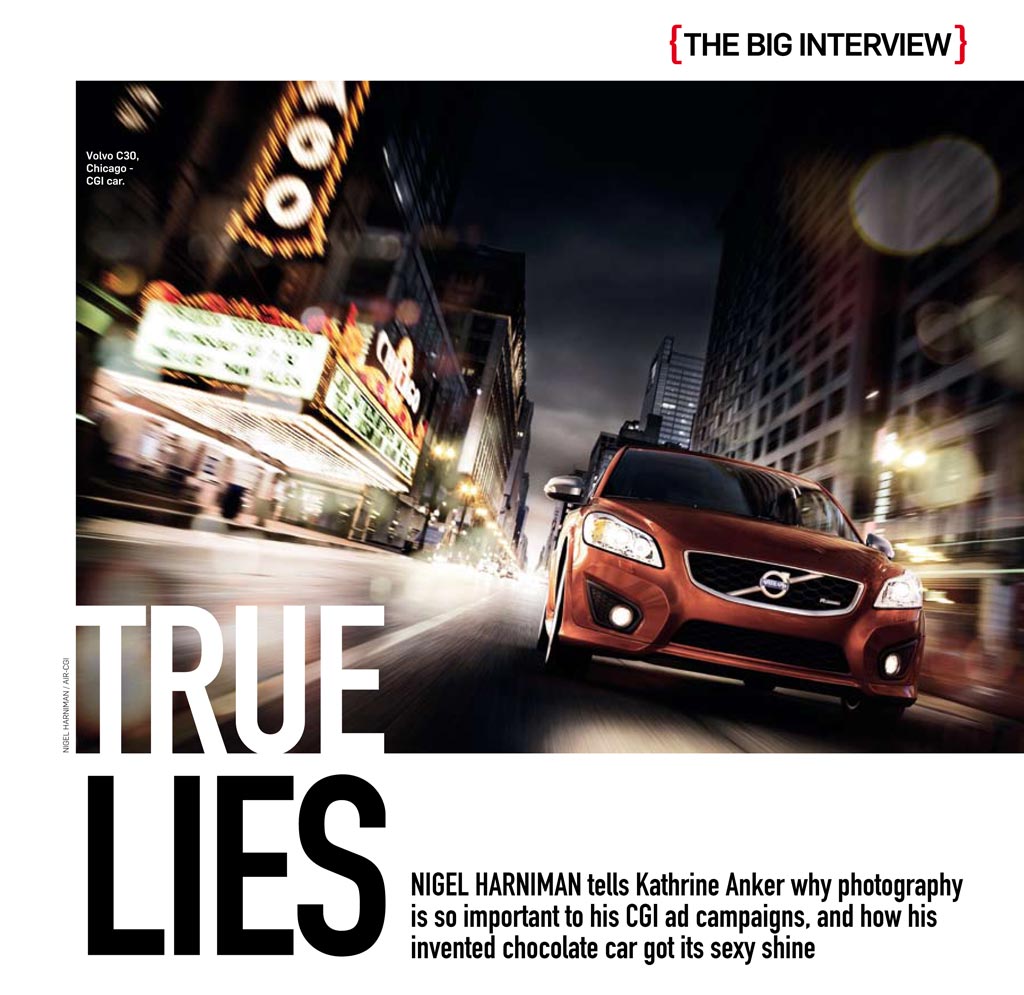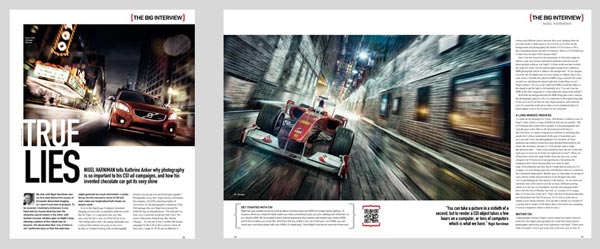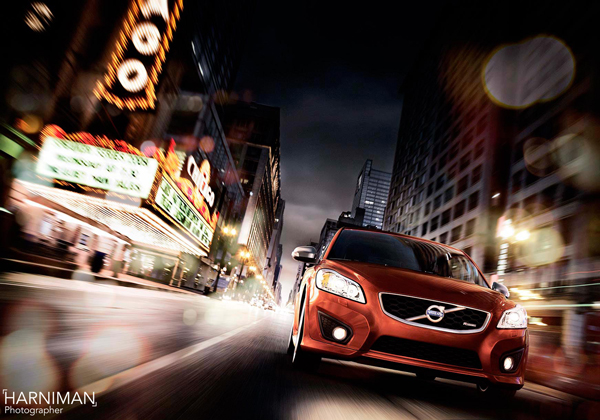Blog

My big Interview in Professional Photographer Magazine: True Lies
Here is my ‘Big Interview’ (their words, not mine) in Professional Photographer, November 2012 issue.
Nigel Harniman tells Kathrine Anker why photography is so important to his CGI ad campaigns, and how his invented chocolate car got its sexy shine.
My chat with Nigel Harniman was my first peek behind the scenes of Computer Generated Imaging, so I wasn’t sure how to prepare. To be covered, I clutched a dictionary in one hand and my mouse hovering over the wikipedia search button in the other, with another browser window open on Nigel’s blog showing a picture of five naked men on bicycles. His declaration that “one of them is me” confirmed early on that this interview might generate too much information. Luckily, diving into the mesmeric world of CGI will soon make you forget about butt cheeks on bicycle seats.
Even in this digital age, Computer Generated Imaging can seem like a completely different world. But for Nigel, it’s a specialism like any other and a way for him to stay in a field that he loves: “My background is that I like taking landscapes and I realised that nobody was going to pay me to do that, so I started working with car photography because you can put cars and landscapes together.” Photography is key here, Nigel stresses, and despite his company, Air-CGI, consisting mainly of CGI artists, it’s the photographic component of the CGI package that sees Nigel travel around the world for big car manufacturers. “The best job I’ve done was a round-the-world trip with Volvo. We went to Barcelona, Hong Kong, Rio, Miami, Chicago… for one job. It was a world-wide launch campaign for the C30 so they wanted to show all their cars, a range of 20-30 cars in different colours and different places, because they were shipping them all over the world. It made sense to do it in CGI so we flew for the backgrounds and photographed the Statue of Christ down at Rio, the Copacabana beach, all sorts of locations. Then we CGI’ed the cars in later from the data Volvo had provided.”
Here’s the first lesson for the uninitiated: A CGI artist might be able to create new planets, humanoid characters and cool cars by knowing their software, but Nigel’s Volvos would not have looked the same if it wasn’t for the natural light coming from a spherical HDR photograph which is added to the background. “If you imagine you were the 3D object and you were sitting in a sphere, like if you were inside a football, the spherical HDR image would be the world around you, including the natural light that would shine on you”, Nigel explains. “So you wrap a spherical HDR around the object in the image to get the light to fall naturally on it. You can’t see the HDR in the final image but it’s what makes the object look realistic.”
With both the background and the HDR being shot with a camera, the photography appears to be is as important as the engineering data of the car in a CGI ad like the ones Nigel produces, and worth the cost of a round-the-wold trip to make a four-cylindered object of?desire appear to have set its wheels on all continents.
A long-winded process
To create an ad campaign for Volvo, Alfa Romeo, Cadillac or any of Nigel’s other clients, a range of different skill sets are needed. “My CGI business has a team of five people. I’m the photographer and I get the guys in the office to do the technical stuff, they’re the CGI artists. It’s quite a long process and this is something that people don’t always understand. In the past, if somebody gave me a car and I went and photographed it on location, all those
materials and surfaces would have been decided beforehand by the client. But nowadays, because it’s CGI, people want to make the decisions after – ‘what colour should we have the car? Is that the right type of wheel on it? Is this the right kind of metal?’ Those are all decisions which are made further down the line now, so that elongates the CGI process in post-production. Sometimes the companies don’t know because they’re at such an early
stage of development and they haven’t made that decision yet. For example, we were doing some tests with Bentley when we worked on the Continental Supersports. Bentley gave us some data, we produced some interior render and presented it to the designer who said, ‘we’re just building the first interior in the factory’. So we went over and had a look at the interior and the car had a different steering wheel on to the one we’d rendered. And the chief designer didn’t know that the boss of Bentley had said ‘no, actually we’ll change?that, we’ll have this wheel on it’. That’s the sort of decisions that then get extrapolated into the CG process. So it’s not as quick and as simple as just taking a picture. You can take a picture in a sixtieth of a second, but to render a CGI object takes a few hours on a computer,?or tens of computers, which is what we have.”
The interview continues and will be featured next week.


















